Ou’erping site is located in Xizhou Village, Heyu town, Yushe County, Jinzhong City, Shanxi Province. In 2017, archaeological excavation of the site was conducted by a joint archaeological team organized by Shanxi Provincial Institute of Archaeology. Ou’erping site had rather simple stratigraphic layers. However, they had quite rich cultural implications. Remains found in the site ranged from ash pits, ash ditches, small tombs, ash-pit burials, pottery kiln, semi-subterranean housing remains, underground building bases(F1-F4)as well as rammed-earth bases on the ground (No.1 Building Site), part of rammed-earth city wall and so on, which lasted from the early phase to the late phase of Warring State Period.
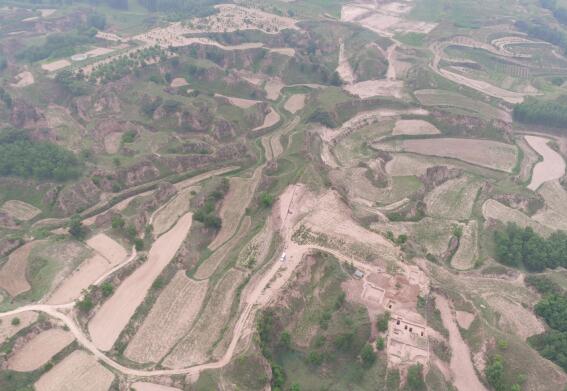
The landscape of Ou’erping Site
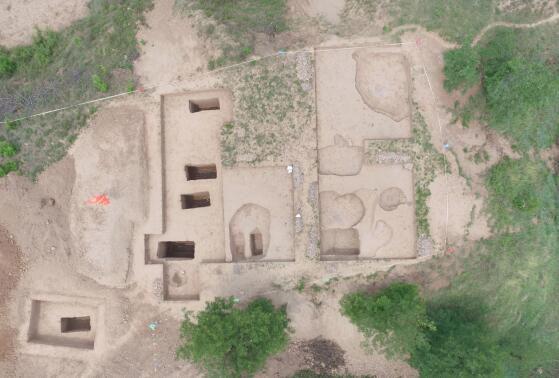
Distribution of ash pits, ash-pit burials and tomb in excavation area I
Tombs from early phase of Warring States period are all small rectangular earthen shaft pit tombs, south-north oriented, containing an outer coffin and an inner coffin. All of them are single burials. The deceased are all lying on their backs with straight limbs or fixed limbs, heading north. Burial gifts have li-cauldrons, jars, basins, dou vessels with a long stand, bo-bowl, yu-vessels, yi-wash basins and so on. There are varied assemblages in different tombs. Other kinds of burial goods have bronze rings, bronze bells, bronze belt hooks, bone tubes, bone ji-hairpins, stone handle-shaped artifacts, lacquer cups and etc. Small earthen pit tombs are arranged in lines and groups, which should be family cemeteries based on consanguine families. The tombs are predicted to be from early phase of Warring States period and tomb owners might be low-rank officers.
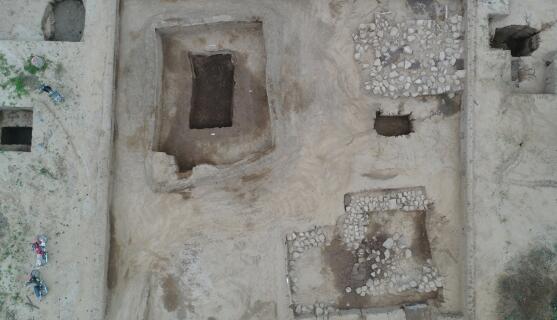
Underground building foundations
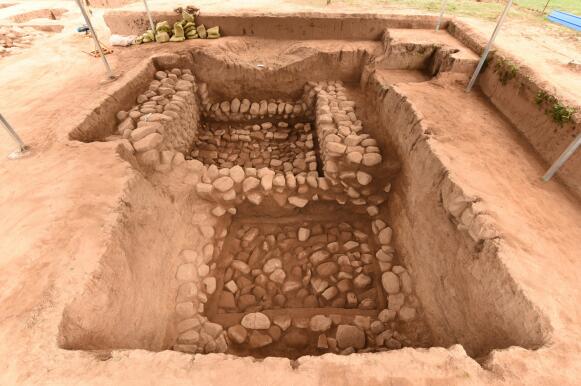
Building foundations F2 and F3
Features from cultural layers of late period have ash pits, ash-pit burials, pottery kilns and so on. Unearthed artifacts are mainly gray clay pottery fragments, including building components, daily-used utensils and tools. Building components have semi-circular tiles and pan-tiles with cord patterns. Daily-used utensils have jars, basins, bo-bowls, dou-vessels with long stand, plates, zeng-steamers, li-cauldrons, fu-cauldrons and so on, most of which are incomplete and broken. Tools have spindle whorl and net weights and etc. Moreover, there are other artifacts. Iron artifacts include adzes, shovels, chisels, axes, knives with a ring in the head and etc. Bronze artifacts contain spade coins, belt hooks and so on. Stone artifacts have axes, hammers and etc. Bone artifacts include bone ornaments, ji-hairpins, awls and etc. Shell goods have knives, sickles and so on.
Many writing characters are inscribed on pottery shards, including stamping characters, carved characters, carved symbols and etc.
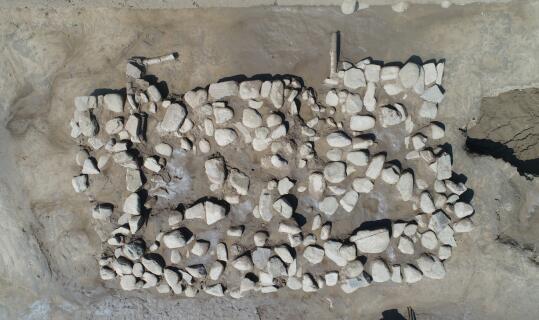
Part of the F1 which is on the ground
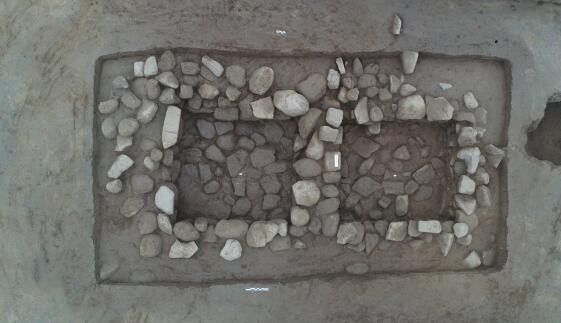
Underground part of F1
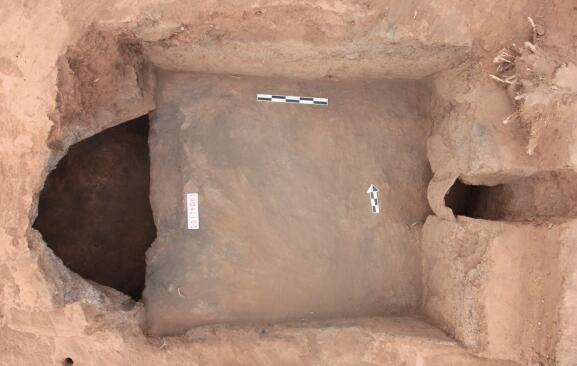
Building foundations F4
The most important discoveries from this excavation are underground building foundation and rammed-earth bases on the ground. There are 4 underground building foundations in the west part of excavation area. Now underground part is main part in residue. There are 3 stone-constructed buildings. Among them, F1 is about 46 square meters in total. F2 is about 45 square meters and F3 is about 55 square meters. There is a building being constructed by rammed-earth and wood. So far, two rammed earth bases on the ground are found in the east part of excavated zone, both slightly west by north. They are roughly paralleling with each other. Rammed earth base in east side is preliminarily predicted to be rammed-earth city walls, while base in west side should be rammed-earth building foundation. There are several lines of semi-circular tiles and pan-tiles being fitted one by one in the marginal of tow rammed earth bases, however, their natures are still uncertain yet. These architectural features are very rare in previous excavations, which are of very high values for research on form, technologies and functions of surface buildings and underground buildings in the Warring States period. (Translator: Ma Huanhuan)







